Telemedicine has revolutionized the way healthcare is delivered. It offers medical consultation and treatment from a distance through technological means. It encompasses a range of services from remote diagnostics to virtual consultations and has become particularly invaluable for preventive medicine.
- INCLUDES DEVICE AND 1 YEAR OF KARDIACARE HEART HEALTH MEMBERSHIP. Get the world’s only six-lead personal EKG device plus a KardiaCare membership, which gives you enhanced EKG analysis and further information about your heart.

Preventive medicine focuses on keeping patients healthy and managing diseases proactively. Telemedicine can facilitate this by making healthcare services more accessible and efficient.
With the advent of telemedicine, healthcare providers can now effectively monitor patients, promote healthy lifestyles, and prevent disease progression. The role of telemedicine in preventive care has become even more significant in the wake of the COVID-19 pandemic. This crisis has drastically increased the adoption of digital health services.
Patients can receive timely advice and interventions, reducing the need for emergency care and hospital visits. Moreover, advancements in telemedicine technologies have made patient-provider interactions more interactive and personable, despite the physical distance.
Key Takeaways
- Telemedicine enables the remote delivery of healthcare services and supports proactive preventive medicine initiatives.
- The COVID-19 pandemic has significantly accelerated the adoption of telemedicine, underscoring its importance in modern healthcare.
- Technological advancements in telemedicine continue to enhance patient-provider communication and the overall effectiveness of virtual care.
Telemedicine Overview
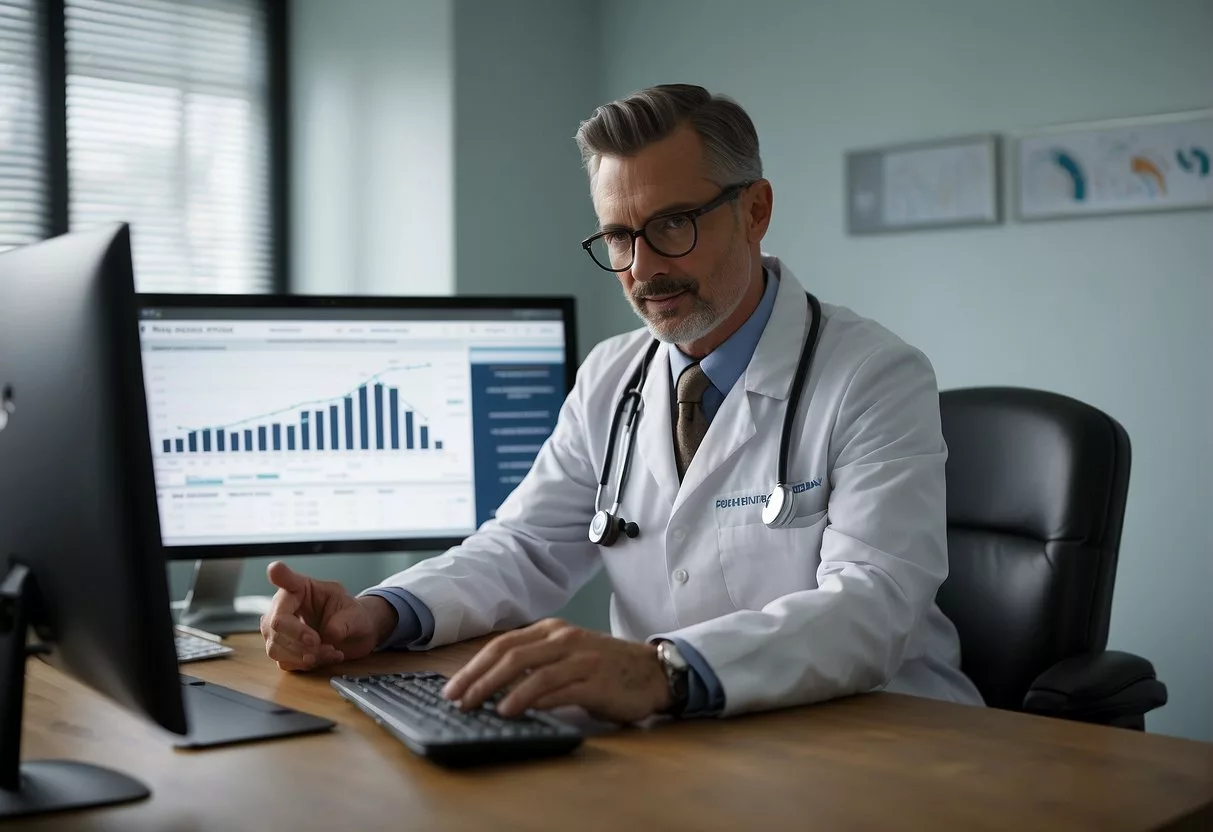
Telemedicine integrates a wide range of electronic, telecommunication, and communication technologies to deliver healthcare at a distance. Its remarkable growth is a clear indicator of its fundamental role in transforming medical care.
Evolution of Telemedicine
Initially a means to reach patients in remote areas, telemedicine has grown exponentially, propelled by advancements in technology. It started as a simple exchange of health information via telephone and has evolved into a complex system encompassing various modes of telehealth. Now, it incorporates real-time video consultations, remote monitoring, and access to electronic health records. This innovation has redefined the geographical boundaries of care, allowing medical providers to offer services globally.
Key Components of Telemedicine
The key components of telemedicine are diverse and multifaceted. Fundamentally, it involves:
- Secure Video Conferencing: Facilitates direct doctor-patient interaction from virtually anywhere.
- Remote Monitoring Tools: Tap into patient data in real time, improving chronic disease management.
- Health Information Technology: Connects patient records and doctor’s notes to aid clinical decisions.
Central to telemedicine is the seamless and confidential exchange of medical information over secure channels. These components enable a broad spectrum of services, from diagnosis and consultation to treatment and medication management, incorporating telehealth technologies as a mainstay of modern healthcare.
Preventive Medicine Fundamentals

Preventive medicine is the branch of medical science focused on preventing diseases and conditions before they occur. This approach prioritizes proactive measures to maintain well-being and mitigate the risk of future health problems.
Role in Disease Prevention
The foundation of preventive medicine lies in its role in disease prevention. It involves identifying risk factors and implementing strategies to eliminate or reduce their impact on an individual’s health. Lifestyle changes play a crucial part in this, as they can directly influence the onset and progression of many diseases.
Key lifestyle alterations may include adopting a healthy diet, engaging in regular physical activity, avoiding tobacco use, and limiting alcohol consumption.
By focusing on preemptive actions, preventive medicine aims to curtail the development of chronic illnesses such as heart disease, diabetes, and certain cancers.
Preventive Care and Screening
Preventive care comprises various interventions including vaccinations, health education, and screening programs designed to detect health conditions at an early stage when treatment is more likely to be effective.
For instance, screenings such as blood pressure checks, cholesterol level tests, mammograms, and colonoscopies are critical in catching diseases early. Preventive medicine encourages regular health screenings and check-ups as part of a routine healthcare regimen. These actions are pivotal in the early detection of conditions that may not yet present symptoms but can lead to significant health issues if left unchecked.
Impact of COVID-19
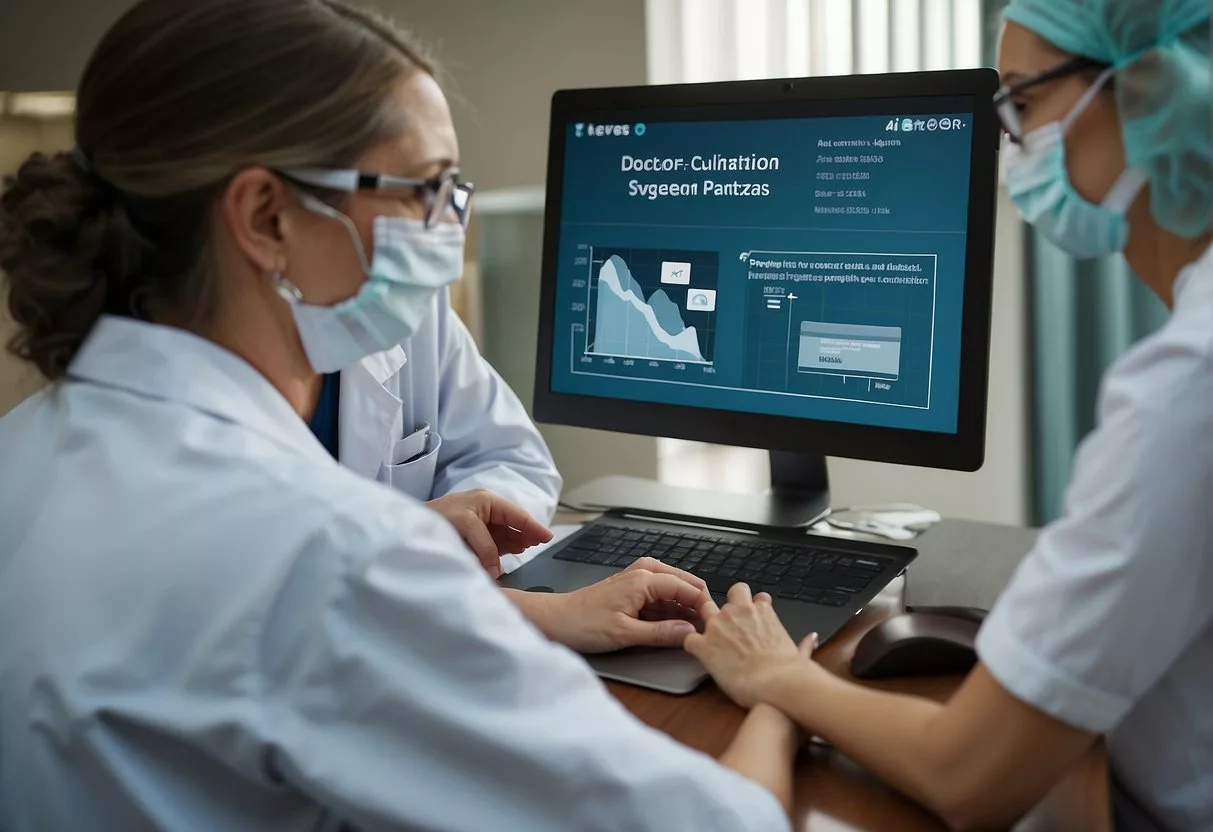
The COVID-19 pandemic has markedly accelerated the adoption of telemedicine. It also prompted widespread implementation of preventive measures against the infectious illness. These strategic responses have been pivotal in managing the public health crisis.
Telemedicine in Pandemic Response
With the onset of the COVID-19 pandemic, telemedicine quickly became a critical service. It allowed health care systems to adapt to the increased demands of managing an infectious illness remotely.
The utilization of telemedicine services saw a 683% increase in urgent care visits, as documented between early March and mid-April 2020, highlighting its essential role. This transition to virtual care not only helped in maintaining social distancing but also ensured uninterrupted access to medical care.
Preventive Measures Against COVID-19
The implementation of preventive measures against COVID-19 included public health initiatives like promoting social distancing and the wearing of masks. These efforts were designed to slow the spread of the virus and decrease the impact on health care facilities.
Educational campaigns and policies were disseminated to inform the public about the importance of preventive practices. The goal was to minimize the risk of transmission and avoid a surge in cases that could overwhelm health care resources.
- Social Distancing:
- Reducing physical contact
- Limiting public gatherings
- Hygienic Practices:
- Regular hand washing
- Use of hand sanitizers
- Personal Protective Equipment (PPE):
- Masks
- Face shields
Telemedicine Technologies
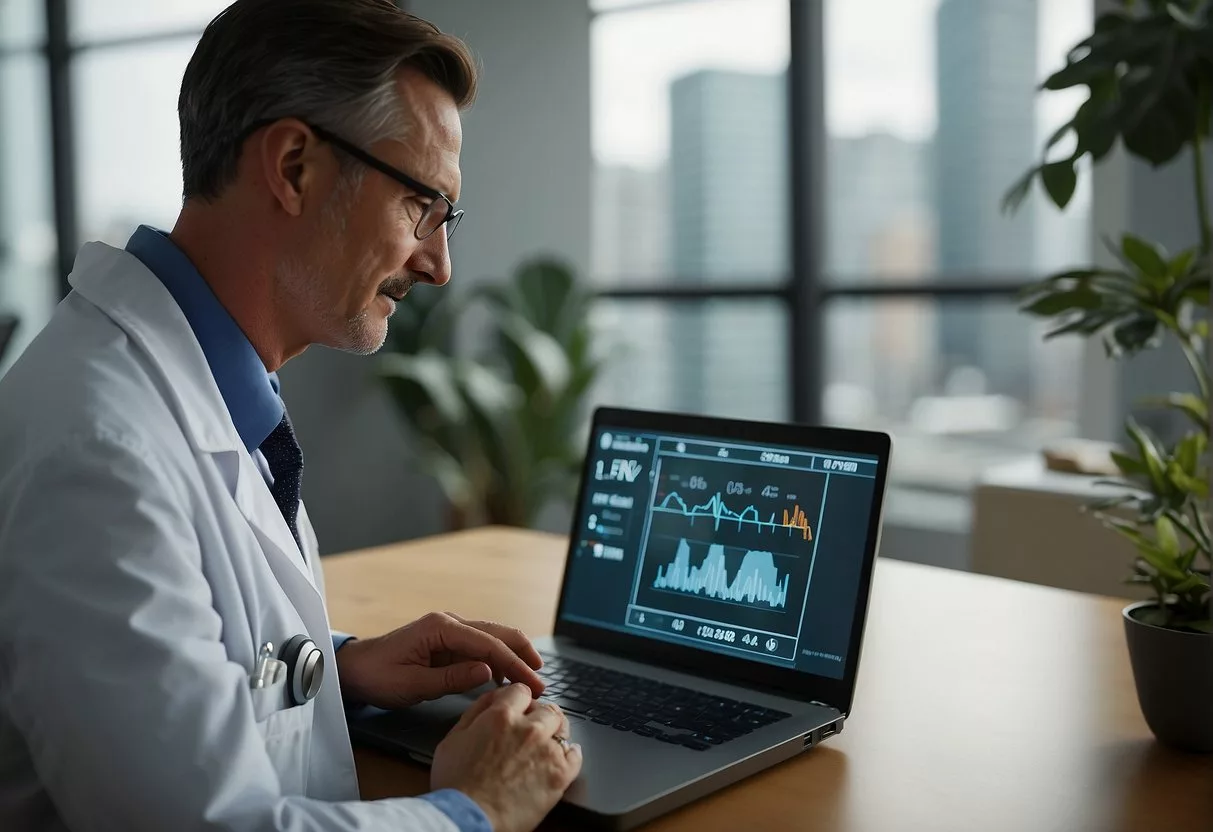
Telemedicine technologies have reshaped how patients receive medical care. They emphasize preventive over curative practices, offering accessibility and continuous monitoring without the constraints of physical location.
Remote Monitoring and Devices
Remote monitoring, a cornerstone of today’s telemedicine, leverages a variety of devices to track a patient’s vital signs and health status in real-time.
For instance, digital blood pressure cuffs and wearable heart monitors collect vital signs data that can be transmitted to healthcare providers. This store-and-forward technique allows for the effective monitoring of chronic conditions, ensuring timely interventions and promoting overall patient health from a distance.
- Examples of Remote Monitoring Devices:
- Blood glucose meters
- Wearable heart rate monitors
- Digital stethoscopes
Electronic Health Records
Electronic Health Records (EHRs) are digital versions of patients’ paper charts. They play a pivotal role in telemedicine by providing a comprehensive view of the patient’s medical information.
EHRs make it possible to capture and store health information that can be accessed or updated by authorized users across different healthcare settings.
- Key Features of EHRs:
- Real-time, secure access to patient data
- Tracking of patient metrics over time
- Facilitation of store-and-forward telemedicine practices
Patient-Provider Interaction
The shift towards digital healthcare has significantly changed the dynamics of patient-provider interactions. Emphasizing convenience and access, telemedicine has introduced virtual channels for consultations and managing prescriptions, reshaping how patients engage with healthcare providers.
Virtual Visits and Consultations
Virtual visits, also known as online video or video visits, have become a cornerstone of modern healthcare. They enable patients to consult with their providers through live audiovisual communications.
This method facilitates virtual consultations where patients and healthcare providers can discuss symptoms, treatments, and medical concerns in real-time.
Studies, such as one published in JAMA, indicate that virtual care can forge a real connection between patients and their providers. This ensures continuity of care even when in-person visits are not feasible.
Table 1: Virtual Visits Advantages and Challenges
| Advantages | Challenges |
|---|---|
| Increased accessibility | Dependence on technology |
| Convenience for patients | Potential for reduced interpersonal connection |
| Time efficiency | Privacy and security concerns |
Patient Portals and Prescription Services
Patient portals have emerged as an integral component of preventive medicine, offering personalized and secure online access to medical information and services.
Patients can use these portals for a variety of tasks such as scheduling appointments, accessing medical records, and communicating with their healthcare team.
Prescription services within these portals allow for efficient prescription renewals and medication management, enhancing medication adherence.
The inclusion of telemedicine in primary care, as described in an article available on PubMed Central, illustrates how strengthening patient-provider relationships through these online tools can correlate with improved outcomes.
Highlighted Features of Patient Portals:
- Secure messaging with healthcare providers
- Viewing test results and medical history
- Requesting prescription refills
- Managing appointment schedules
Specialized Telemedicine Services

Specialized telemedicine services extend the reach and enhance the quality of healthcare. They are particularly beneficial in areas like mental health, chronic disease management, and oncology. By utilizing technology, patients receive tailored care that addresses their specific needs from the comfort of their own home.
Telepsychiatry and Mental Health
Telepsychiatry has transformed access to mental health services by enabling individuals to consult with psychiatrists and therapists remotely. Patients battling conditions such as depression and anxiety can now receive therapy and medication management through audio and video calls. This is not only convenient for patients but also expands the reach of mental health professionals to underserved areas.
- Advantages:
- Increased accessibility
- Privacy and comfort
- No transportation time or costs
Chronic Disease Management
Managing chronic diseases such as diabetes and heart conditions through telemedicine platforms allows for continuous, real-time monitoring and guidance. Health professionals can track patients’ vital signs and adjust treatment plans accordingly. They also provide personalized care protocols and interventions, thereby reducing the need for frequent office visits and hospital readmissions.
- Methods:
- Remote patient monitoring
- Virtual consultations
- Health coaching and education
Teleoncology for Cancer Screening
Teleoncology offers a subset of telehealth services focused on cancer care. It is instrumental in enhancing patient-centered approaches to cancer screening, follow-up care, and support during survivorship. For example, breast cancer patients can benefit from remote genetic counseling and access to specialists for early diagnosis and management advice.
- Services:
- Virtual tumor boards
- Remote consultations for diagnosis and treatment
- Supportive care during survivorship
Accessibility and Adoption
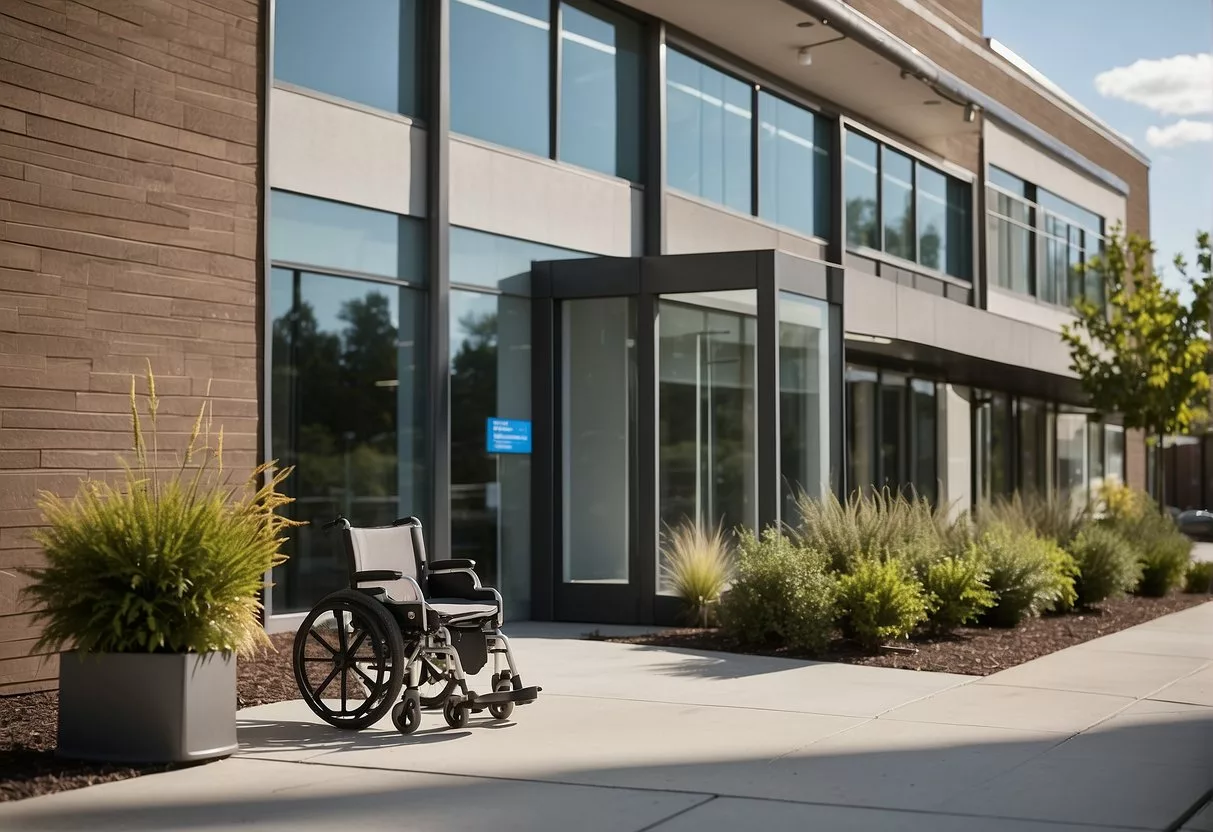
Telemedicine is reinventing the delivery of healthcare services by enhancing accessibility and simplifying the adoption process, particularly in rural and underserved areas. It addresses substantial barriers and opens new avenues for preventive healthcare. It ensures that education and proper training are integral to its effective implementation.
Rural and Underserved Areas
In rural regions, telemedicine bridges the gap between underserved patients and access to healthcare. Patients residing in these areas often face challenges such as long travel distances to healthcare facilities and a scarcity of local specialists. For instance, telemedicine enables remote consultations and follow-ups, which directly influence the frequency and quality of preventive care these patients receive. Specifically, it allows for timely interventions, management of chronic conditions, and access to medical expertise otherwise unavailable in their locale.
Healthcare Education and Training
A critical component for successful telemedicine adoption in preventive medicine is the education and training of healthcare providers. Training programs are crucial for clinicians to understand the capabilities and limitations of telemedicine technology. They are taught not only how to use digital tools but also how to maintain a high standard of patient care remotely. Such training has proved to be essential in ensuring that both patients and providers are comfortable and capable of utilizing telemedicine services effectively, thereby improving overall patient outcomes.
Legal and Ethical Considerations

In the integration of telemedicine into healthcare, addressing legal and ethical issues is paramount for safeguarding patient privacy, ensuring regulatory compliance, and managing the reimbursement process efficiently.
Privacy and Security
Telemedicine introduces unique challenges in protecting patient information. For telehealth services, maintaining privacy and security is crucial, and healthcare providers are obligated to adhere to the Health Insurance Portability and Accountability Act (HIPAA). Telecommunication technologies must employ robust security measures, such as encryption, to safeguard health data during transmission. Patients also often find considerable comfort and convenience in knowing their sensitive health information is secure while they receive care remotely.
- Encryption: Ensures secure data transmission.
- HIPAA Compliance: Crucial for legal telemedicine practice.
Regulations and Reimbursements
Navigating regulations for telemedicine can be complex. Providers must be licensed in the state where the patient receives services and comply with both state and federal regulations. When it comes to reimbursements, Medicare has specific criteria for what telemedicine services are covered. These criteria include various aspects such as the location of the patient and the type of technology used.
- Licensing: Providers need state-specific licenses.
- Medicare Coverage: Includes certain telemedicine services under specific conditions.
Benefits and Challenges
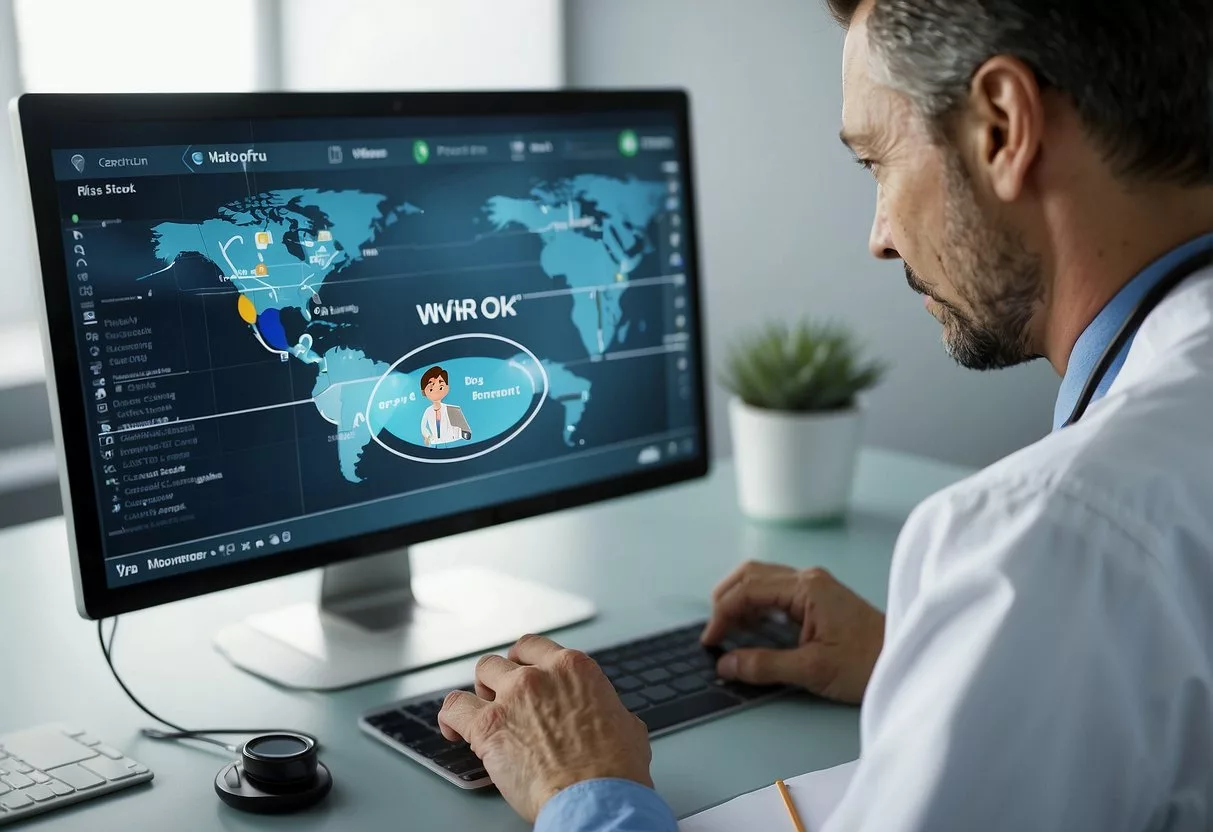
Telemedicine has reshaped the landscape of healthcare, introducing a blend of cost-effectiveness and convenience. However, like any innovation, it encounters specific barriers that require attention to maximize its potential.
Cost-Effectiveness and Efficiency
Telemedicine is recognized for its cost-effective nature, often reducing expenses associated with in-person clinical visits. A survey conducted by Johns Hopkins Medicine revealed that telemedicine could significantly curtail costs while delivering care. Patients enjoy the convenience of remote consultations, translating to savings on travel and reduced time away from work. Efficiency is heightened as telemedicine facilitates quicker access and turnaround times for patient care.
Potential Limitations and Barriers
Despite the comfort of receiving care from one’s home, telemedicine faces challenges. There are technical and infrastructural barriers, particularly in rural areas, that can limit access to telehealth services. One study highlights that some populations depend more heavily on telephone-based consultations due to a lack of broadband internet. The range of services that can be effectively provided via telemedicine also has limitations, which might affect the quality of care for certain medical conditions or assessments necessitating physical interaction.
Advancements in Telemedicine

With ongoing technological progress, telemedicine has made significant strides in enhancing healthcare delivery. Two notable areas of advancement include the integration of artificial intelligence and the innovation in care delivery models.
Artificial Intelligence Applications
Artificial intelligence (AI) is increasingly underpinning many telemedicine for healthcare services, bringing about transformative changes. AI algorithms are now capable of analyzing medical data, which allows for more accurate diagnostics without the need for a physical presence. Furthermore, these systems can manage and parse large datasets to provide predictive analytics, aiding in preventive healthcare measures.
Innovation in Care Delivery
Telemedicine’s flexibility has led to diverse innovations in how care is delivered. These range from remote diagnostic services to virtual doctor visits and remote patient monitoring. For instance, the use of telemedicine during the COVID-19 pandemic illustrated the potential for virtual visits in various medical scenarios including chronic condition management and ambulatory specialty care. This shift highlighted telemedicine’s ability to adapt quickly to ensure uninterrupted healthcare services.
Integrating Preventive and Telemedicine Practices
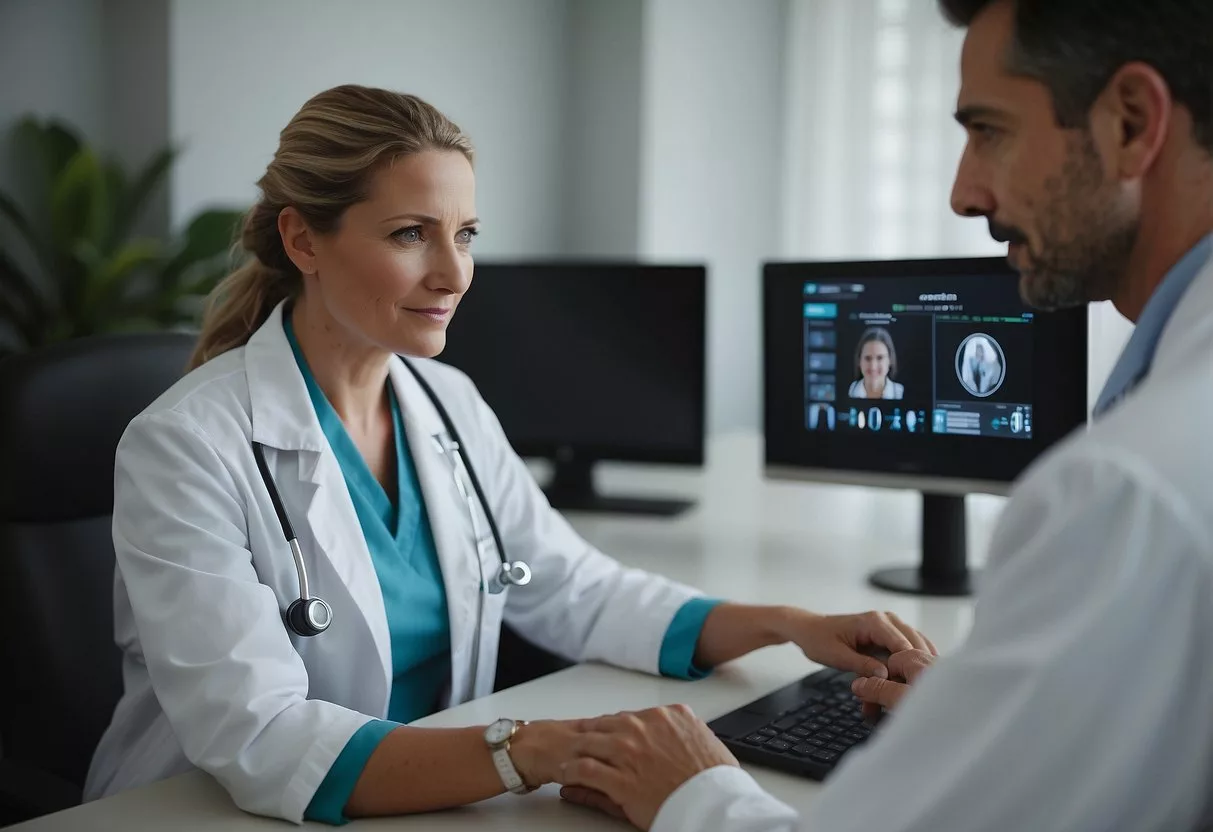
The integration of telemedicine with preventive medical practices promotes proactive healthcare delivery by fostering interdisciplinary cooperation and patient-centered strategies. Through telemedicine, health care professionals can offer comprehensive services that address early detection, regular monitoring, and consistent management of health conditions.
Interdisciplinary Cooperation
Primary care physicians and nurse practitioners play vital roles in preventive health strategies implemented through telemedicine. They collaborate with various medical specialists to provide an intervention framework that catches health issues early and manages them effectively. Coordination among different specialties ensures that a patient receives holistic care.
- Specialists provide input for complex cases using telemedicine platforms.
- Nurses and nurse practitioners facilitate ongoing patient education and follow-up.
Patient-Centered Approaches
Patient-centered care emphasizes the importance of individual patient preferences, needs, and values. Telemedicine empowers patients by enabling:
- Direct communication with healthcare providers for personalized care plans.
- Real-time interventions that mitigate the effects of chronic diseases and promote wellness.
Future Prospects

The integration of telemedicine has become increasingly pivotal in healthcare. It offers significant opportunities for expansion and introduces innovative trends in preventive medicine.
These capabilities stand to reshape patient care and health management as technology continues to advance.
Expansion of Telemedicine
Telemedicine has rapidly evolved from a niche service to a wide-reaching method of delivering healthcare.
Through e-health platforms, medical professionals can offer consultation, diagnosis, and treatment options remotely.
This expanded reach is crucial in providing care to rural or otherwise inaccessible locations, where patients may have limited access to medical facilities.
Additionally, m-health applications empower patients to manage their health more proactively with mobile devices. This encourages active participation in personal health and wellness.
The growth in the telemedicine market speaks to the potential for further integration into daily medical practice.
- Key Aspects of Telemedicine Expansion:
- Remote consultations and diagnostics
- Improved access for underserved areas
- Patient empowerment through m-health
Emerging Trends in Preventive Medicine
Preventive medicine is increasingly focusing on leveraging technology to predict and prevent health issues before they become acute.
Through the implementation of telemonitoring systems, healthcare professionals can continuously track patients’ health metrics. This leads to early detection and intervention of potential medical conditions.
The rise of personalized medicine, fueled by data analytics, tailors preventive strategies to the individual’s genetic profile, lifestyle, and risk factors.
This personalized approach is a significant shift from the traditional one-size-fits-all paradigm in preventive care.
Studies reflect the potential for advanced analytics and clinical decision support systems in refining treatment decisions and enhancing patient outcomes.
- Innovations in Preventive Medicine:
- Telemonitoring for early detection and intervention
- Personalized preventive strategies
- Utilization of advanced analytics for health predictions
Conclusion
Telemedicine has emerged as a critical facilitator in the advancement of preventive medicine. By bridging the gap between patients and healthcare providers, it creates an accessible platform for early detection and health education.
Preventive strategies are essential not only for individual well-being but also for easing the burden on healthcare systems. With telemedicine, there’s a shift towards a more proactive approach in healthcare, focusing on maintaining health rather than only treating illness.
Telemedicine offers multiple ways to support preventive measures:
- Education and Awareness: Patients have greater access to health information, empowering them to take charge of their wellness.
- Regular Monitoring: Remote monitoring tools allow for consistent tracking of health indicators, leading to timely interventions.
- Accessibility: Those in remote or underserved areas can receive quality health advice and preventive care without the need for travel.
The integration of telemedicine into healthcare routines is not without challenges, yet the benefits, such as enhanced communication and improved health outcomes, are substantial.
Preventive medicine’s emphasis on health promotion and disease prevention is greatly supported by telehealth innovations, ensuring a more robust public health framework.
Despite the reliance on curative methods in the past, the health landscape is changing. The combination of telemedicine and preventive care offers a promising future for healthcare delivery, highlighting the importance of a preemptive approach to health management.
Frequently Asked Questions
Telemedicine has revolutionized how preventive health services are delivered by providing remote care options. Let’s explore the specifics through common inquiries.
How does telemedicine support preventive medicine practices?
Telemedicine enables health care professionals to extend preventive services to patients regardless of location. It facilitates alternative methods for in-person preventive visits, offering flexibility and maintaining continuity in patient care.
What are the limitations of using telemedicine for preventive healthcare?
There are concerns about the quality of care when physical examinations are not possible. Issues such as equitable access to technology and the varying levels of comfort with digital tools also present challenges to telemedicine’s effectiveness for preventive healthcare.
What role does telemedicine play in managing chronic diseases for prevention?
Telemedicine is instrumental in monitoring and managing chronic diseases, which is key in preventive medicine. It enables frequent check-ups and timely interventions, reducing the likelihood of disease progression and associated complications.
Which preventive medicine services are most effectively delivered through telemedicine?
Services that do not require physical contact, such as counseling, education, and medication management, are easily facilitated through telemedicine. It effectively delivers these services, helping to maintain and improve patient health.
How do telemedicine platforms ensure patient privacy during preventive health consultations?
Telemedicine platforms are designed with security measures compliant with legal requirements, like encryption and secure data storage. Providers must adhere to ethical practices to protect patient confidentiality during virtual visits.
What are the advantages of integrating telemedicine into routine preventive care?
The inclusion of telemedicine in preventive care provides several advantages. These include improved access to services, convenience for patients, and the ability to maintain care without geographic boundaries. It also allows for cost-effective solutions. Telemedicine can reduce the need for travel and time off work for patients.